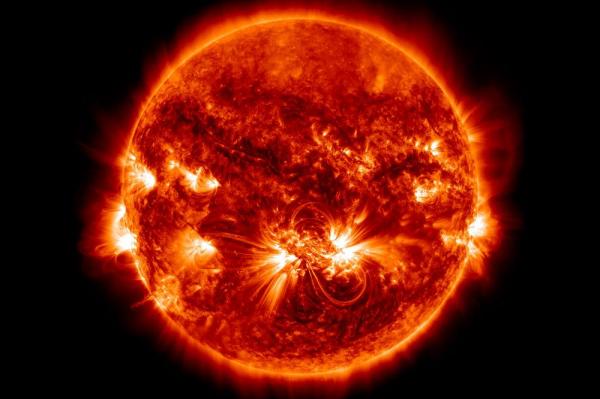
Aug. 5 (UPI) — Scientists have discovered for the first time that the corona of the sun is strongly linked to the 11-year solar magnetic activity cycle.
Researchers from University College London, George Mason University and the Naval Research Laboratory identified that an increase in magnetic activity mirrors an increase of certain elements, such as iron, in the sun’s corona, or its outer atmosphere.
The surface of the sun, known as the photosphere, has a temperature of approximately 10,000 degrees Fahrenheit, but the corona is several hundred times hotter, to millions of degrees.
“Why the Sun’s corona is so hot is a long-standing puzzle,” Dr. David H. Brooks, of George Mason University, said in a news release. “It’s as if a flame were coming out of an ice cube. It doesn’t make any sense! Solar astronomers think that the key lies in the magnetic field, but there are still arguments about the details.”
The sun’s 11-year solar magnetic activity cycle involves the sun moving from quiet periods at solar minimum to intense magnetic activity at solar maximum. This is the point where sunspots appear and there is an increase in radiation.
“Previously, many astronomers thought that elemental composition in a star’s atmosphere depended on the properties of the star that don’t change, such as the rotation rate or surface gravity,” Brooks said. “Our results suggest that it may also be linked with the magnetic activity and heating processes in the atmosphere itself, and they change with time, at least in the Sun.”
The scientists analyzed observations from the Solar Dynamics Observatory during low activity in 2010 through 2014, when huge magnetic active regions crossing the solar disk occurred.
“Our observations started in 2010, near the last solar minimum, and so observations of the global coronal spectrum for a complete solar cycle have not been possible,” Dr. Deborah Baker, of UCL Space and Climate Physics, said.
“The fact that we detected this variation of the Sun in a relatively small period of time really highlights the importance of observing stars over complete stellar cycles, which we hope to do in the future. Currently we tend to just have snapshots of stars, but these are potentially missing some important clues.”
The study was published Aug. 3 in Nature Communications.





